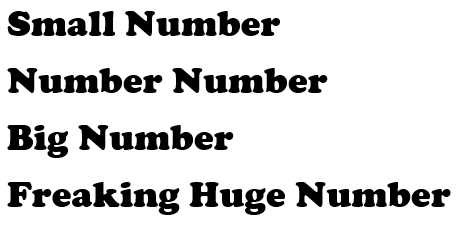It only sounds judgmental because it is. Idiot mistakes. You know the ones. They are given real world stoichiometry problems and they give answers like this:

We love our kids. But those are idiot answers. The kids aren't idiots. But their answers sure are.
Over the past few school years I have started instituting a simple step at the beginning of each problem that helps the avoid those types of answers. The students must categorize the answer before they write anything down or use their calculators. They all use the Koch Number Category System.

Small Numbers. These are defined as values less than one. Decimal answers.
Number Numbers. These are numbers you might count with or price things at Walmart.
Big Numbers. Big numbers with names. Thousands, millions or billions.
Freaking Huge Numbers. Some scientific notation with a big exponent. Avagadro's number is a Freaking Huge Number.
We do this while starting stoichiometry. They must estimate the category of number before they start work. They have a sense of the answer because they have been introduced to the mole by playing simple games. I wrote about that recently here.
For example:
How many atoms of argon are in 3.2 mol of argon? The answer: Freaking Huge Number. The kids know that a mole has a huge number of atoms. This is more than a mole. Therefore, the answer must be Freaking Huge. So when a kid messes up his dimensional analysis and gets an answer with a very negative exponent, he automatically knows something is wrong. He didn't get the right category.
How many moles is 2.56 g magnesium? Small number. If one mole weighs 24.3 g, then this has to be a fractional number.
How many grams of sodium in 4.31 moles? Number Number. Every mole 23 g, so the answer is a number I might see in Walmart.
How many moles of oxygen are in 56.3 g of potassium nitrate? Number Number. That's less than a mole of compound, but there are 3 moles of oxygen per mole of compound. I bet that will be a number I might count with.
You can see how this brief step gives them purpose and anticipation before going to their calculators. Because, for better or worse (mostly worse), the students ALWAYS believe their calculator. Even when they input something completely wrong. The technology said it is true, so it must be. Think about it. How many times have you had a student say, "But that's what my calculator said, See, I will show you..." And then they proceed to make a critical error in dimensional analysis. Or forget to use parenthesis. Or any other number of issues.
If they always know the category of the answer before they start a question, they will begin to trust their brains and not their calculators. And that is what we teachers call a Freaking Huge Deal.

Comments